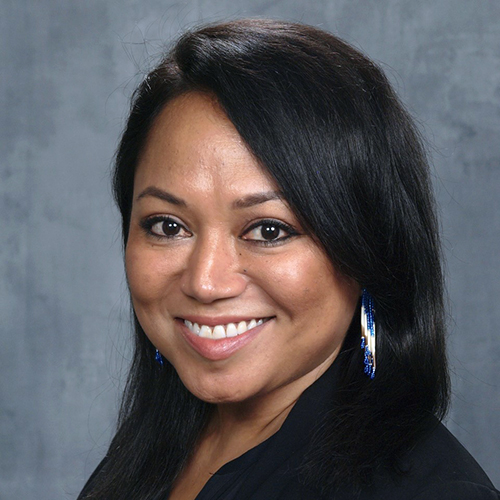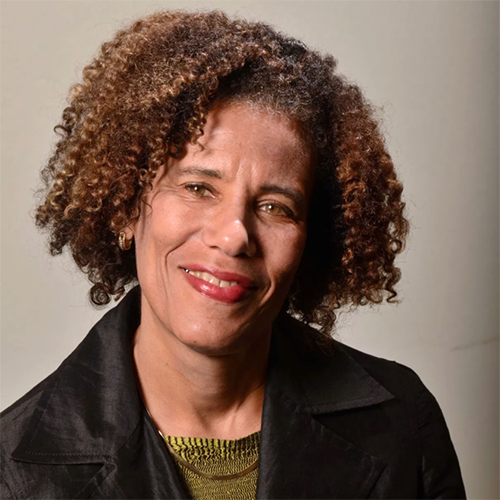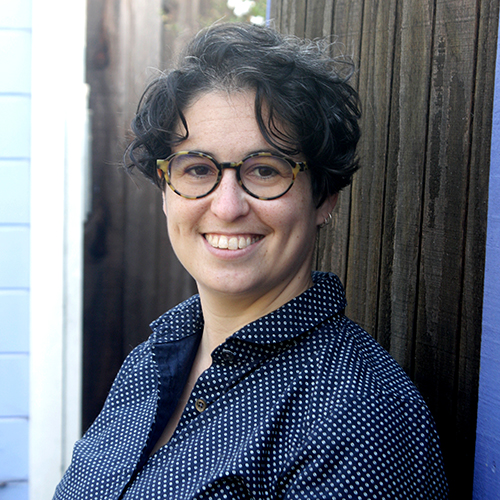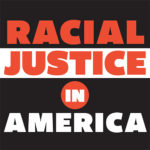Why were Trump loyalists allowed to storm the Capitol?
Berkeley scholars discuss how law enforcement's response to the attack on the Capitol may have been more excessive for groups of a different cause
January 8, 2021

Trump supporters try to break through a police barrier on Wednesday, Jan. 6, 2021, at the Capitol in Washington, D.C. As Congress prepared to affirm President-elect Joe Biden’s victory, thousands of people gathered to show their support for President Donald Trump and his claims of election fraud. (AP Photo by John Minchillo)
After the attack on the U.S. Capitol Wednesday (Jan. 6) by right-wing Trump loyalists, something that kept coming into our minds at Berkeley News — and that has been echoed by Americans across the nation — is that if anyone other than a privileged, predominantly white group of people had stormed the Capitol, the response by law enforcement and other officials would have been much different — likely much more violent and extreme.
In the past few years, we have seen overblown, brutal reactions by law enforcement to protesters fighting for their civil rights — during the Black Lives Matter protests against police brutality, the Native American protests against the Dakota Access Pipeline and the protests by people with disabilities when the Trump administration was poised to eliminate Medicaid. And there are countless other examples from throughout history.
Berkeley News spoke with three scholars — Nazune Menka, a tribal cultural resources policy fellow at Berkeley Law; Denise Herd, associate professor of behavioral sciences in the School of Public Health and associate director of Berkeley’s Othering and Belonging Institute; and Katie Savin, a Ph.D. candidate in education in the School of Social Welfare — about how the attack on the Capitol is a symptom of the larger problem of white supremacy and how we need to embrace our common humanity to move forward as a nation.
Berkeley News: When the U.S. Capitol was under siege on Wednesday by a pro-Trump mob, what was going through your mind?

Nazune Menka is a tribal cultural resources policy fellow at Berkeley Law. (Photo courtesy of Nazune Menka)
Nazune Menka: Something I found myself saying in 2020 is, ‘I’m not shocked, but I am shook.’ As an Indigenous person, the lens that I view the world through is colored so drastically different from the white lens. For example, I’m still trying to learn my Indigenous language that was stripped away from my ancestors through forced Western education, so trying to understand what it is that white supremacists are up in arms about — it’s irreconcilable. I can’t understand their level of anger. Indigenous people are fighting for land back and the simple right to relearn our languages again after centuries of oppression.
The United States was founded on racist ideologies and genocide. Christianity was extremely racist, as was the Doctrine of Discovery, which was used as an excuse to legitimize the taking of Indigenous land. Colonial and imperialist countries convinced themselves it was their divine, God-given right to colonize and Christianize Indigenous peoples. These were the foundational tenets that allowed the genocide of Indigenous peoples and the taking of land.
In trying to understand why the siege on the Capitol occurred, I believe that the shift to more progressive policies, more diverse political representation in Congress, and the growing middle class of BIPOC individuals has some individuals afraid that their last little bit of white privilege is going to be stripped away. It felt like we were witnessing the last bastion of white supremacy rear its ugly head on Wednesday.

Denise Herd is an associate professor of behavioral sciences in the School of Public Health and associate director of Berkeley’s Othering and Belonging Institute. (UC Berkeley School of Public Health photo)
Denise Herd: It was unnerving to see iconic representations of American democracy under siege, and people coming in attempting to harm members of Congress. That they were able to do it just wholesale was mind-boggling.
But there’s a real white supremacy link here.
There have been a lot of law and order campaigns against Black and other people of color in this country, and also so many things done in the name of preventing terrorism. Campaigns that have painted Muslim Americans, African Americans, Latino Americans and other people of color as threats to our country.
Trump was building a wall to supposedly keep out criminals, but we have criminals right there in the Capitol doing things that are unimaginable in a sophisticated, modern Western nation. So, that, to me, is incredibly disturbing.

Katie Savin is a Ph.D. candidate in the School of Social Welfare. (UC Berkeley School of Social Welfare photo by Alli Yates)
Katie Savin: It seemed like they were playing protest — like they were going through the motions of what protesters do, yet it wasn’t real. I tried to understand what I was watching through the lens of all of the times I’ve found myself in front of a police line, marching, holding up signs or chanting. Where was the fear in the eyes of these people who nonchalantly stopped for selfies with police?
I realized that it was not like civil disobedience I’d partaken in, because two essential pieces of civil disobedience were missing: There was no real strategy, and there was no sense that the people involved were making a (calculated) trade-off — that they were trading their personal safety for a higher purpose. There seemed to be absolutely no risk to their safety whatsoever, which, in a twisted way, made this a very low-stakes event.
Why do you think the predominately white militant mob at the Capitol was treated differently by law enforcement than Black Lives Matter or other disenfranchised groups are treated when they protest? What do you imagine the situation would have looked like if they were affiliated with another cause?
Menka: In my mind, it’s about property and power, and views of threat to property and power. Capitalism is about extracting natural resources for personal profit. I’ve seen a shift in the past four years, but also decades — the shift towards valuing money and profit and capitalism over humanity. It’s a trend that’s been occurring for centuries.
In 2016 and 2017, we saw what the police response was to the Dakota Access Pipeline and water protectors. The use of water cannons and rubber bullets on peaceful people at the Water Protector Camp was reminiscent of the police treatment of activists during the civil rights movement in the South.
This summer, we saw what the police response was to the Black Lives Matter movement. The protests that were happening were largely calm. They were respectful, peaceful protests. People came in from out of town to counterprotest, and that’s where the clashing and violence came from. I don’t think that any of the violence this summer was at the behest of the Black Lives Matter movement. I think quite the opposite — these events were targeted to skew the optics in the media to basically demonize people of color even further. Thinking about this in contrast to the police response at the Capitol is heartbreaking to me.
Herd: There is a long history of anti-Black structural racism in American society. Law enforcement has been part of a system that has oppressed people of color and Black people: upholding the system of white supremacy.
Race riots historically have been about police brutality, and that history is filled with instances where Black people were lynched, run out of town and told they were going to be killed. There’s also been this racial terror from groups like the Ku Klux Klan that overlaps with policing forces.
We know that African Americans and other people of color are four or five times more likely to be arrested by the police, and they’re much more likely to be killed. So, we already have a structure in which they’re being targeted as individuals in the society with more police killings, more injuries, more arrests, much more mass incarceration: That’s the backdrop.
So, collectively, you’ve got the potential for police to act on Black groups of people or protesters in the same way that it happens individually for Black people and other people of color in their communities. That excessive force and police brutality is not seen as prevalent against white people.
Savin: While the militant mob was still taking selfies with Capitol Police inside of the building, I touched base with a disabled friend with whom I had participated in civil disobedience in 2017 when the Trump administration was poised to eliminate Medicaid. We reminisced about how our plans to stage a sit-in in a Reno courthouse, targeting a senator of Nevada, were temporarily thwarted when police came to stop us before we’d even finished unloading our small crew of disabled people from the wheelchair-accessible van.
Apparently, they had found online chatter about the event, saw a wheelchair-accessible van full of people carrying posters and (rightly) assumed we were there to protest. We were easily and immediately othered and physically barred from entering the building. We had to advocate for our rights to enter a public building before we could even begin to protest.
How, we wondered together on Wednesday, was this much more visible and much more violent group carrying out this much more plainly and publicly planned event in an area with triple the security presence, not stopped as we had been? There was really only one reasonable answer: The security forces did not want to stop this group. They were not directed to do so. That was never their job.
What should political leaders do, or not do, to help change this double standard?
Menka: We need a better education system. I think our education system has failed. We’re not teaching the truth and history of this country. People are allowing themselves to think that white privilege doesn’t exist — that we’re over it, we’re past that. When you start looking at the policies and laws that the government has used to oppress the ‘other,’ whoever’s not ‘in’ at the time, when we look at these systems, we should ask ourselves, ‘How do we make one another human to one another?’ To do that, we need to face the truth and history of this country — that we are on stolen land, and that slavery built this country, and that capitalism continues to extract and pollute Indigenous lands. When we dehumanize each other, it allows for any amount of hateful crimes to be committed with a blind eye turned.
There are ways forward, but that truth and that healing isn’t going to come without some sort of reckoning. And I think we’re in the midst of that now.
Also, we can’t allow for the criminalization of protesters. When states start passing laws that put property and infrastructure over people and the well-being of the local community, that’s a problem. That’s something that policymakers need to take a hard look at. I think there’s tons of model legislation — the United Nations has really great human rights efforts underway. That leadership is what we need because, you know, the U.N. was created after World War II and the rise of Nazism. I mean, we’re still fighting that, in the sense that white supremacy and racism are still very prevalent.
Herd: I think it’s going to be important to try to get down to the human level and address some of the pain that people are in. And I think it’s been very difficult because of misinformation and the spread of lies: People are not well-informed.
I think the new administration is really going to be trying to bridge some of the divide and work on some of the real core problems that we’ve got in the country. I think one of the biggest core problems that we have right now is we’re in a pandemic, and building bridges around those kinds of things is going to be necessary.
With that kind of focus on taking care of people, and coming together in terms of all of us having some of the same basic rights, will be very helpful.
What do you think the response should have been in this situation? How do you hope officials respond to similar instances in the future, but also to legitimate protests?
Menka: Clearly, there should have been more security. I mean, if the president of the United States is supporting these people, saying he loves them, why is he going to send in the National Guard? So, that was a failure at the highest level, as was the lack of leadership from federal agencies like the Department of Homeland Security.
The response was slow, but when they did move them out, yes, that was the way to do it right — to slowly walk forward to clear the area. It was a very metered response for people who were behaving like that — I mean, literal terrorists. I couldn’t believe it. They were armed, they had homemade bombs. You cannot have a conversation about Wednesday without talking about race.
Herd: I think it’s terrorism. They need to definitely be deterred and be treated according to what the law says. There are penalties for defacing public property, there are penalties for attacking other people and for threatening violence under those sorts of circumstances. But this was even worse because it’s a group of elected officials.
This wasn’t a protest. It was a mob, and it was an attack. So, I think there are penalties that need to be explored, and people need to be arrested, and they need to be charged.
Savin: I don’t think that fairness looks like everyone being treated with the violence and repressiveness that BLM protesters, disabled protesters and many groups of marginalized folks experience daily. I think that during this coup, we all were exposed to some of the vulnerability that marginalized groups and individuals experience on a regular basis — a vulnerability born out of the realization that security systems are not designed for our safety, but to uphold the status quo of white supremacy and patriarchy and ableism, etc. The issue is that the police are not here to protect everyone’s safety, they never have been since their origins in the first slave patrols, and they never will in the current system.
What can Americans do to move forward and build a better, more caring society? What do you hope to see in the future?
Menka: I really want people to read more. I want people to be engaged. I want people to be civically engaged — be on city council, know what’s happening on the community level. And I also want us to start caring a little bit more. I don’t want us to only have church as our level of community or to only have a university as our level of community. We promote this individualistic idea of what being an American is like — we build fences around our houses. I’m done with the fences and walls. Those separations, they need to come down. There are ways forward, and one person can make a difference.
Herd: People are going to have to give up structural racism. It doesn’t work. It’s very, very oppressive to people of color, but it also dilutes people and hurts the body politic. There’s a lot of suffering, and I think the focus needs to be on eliminating that suffering and supporting people and to stop feeding the public lies.
Savin: For many people of color, LGBTQ+ and disabled people, this understanding of police representing selective safety comes from their experiences being targeted. The other side of this coin is what we saw on Wednesday: the safeguarding and shepherding of white people committing criminal acts of violence. I think this can bring us closer to a truth that has existed all along — that none of us are safe in a white supremacist police state, that none of us are free until we are all free.
As Americans, let this be yet another reminder of whose lives are most at risk when we call the police, so we might continue to create and demand safer alternatives.
